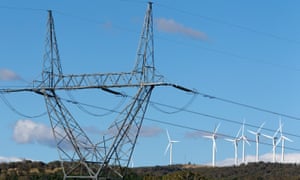Instead of saying we can’t do it, imagine if our leaders, like those behind Snowy Hydro, showed how great things can be done
From 1949 to 1974 it was constructed by a multi-cultural team including many immigrants escaping a Europe that had been ravaged by war. When seen up close, the tunnels, dams and power plant infrastructure are a truly impressive sight. They are a testament to how our country can successfully harness the hard work and talents of people from across many countries and cultures.
Several decades on it continues to deliver great benefits to the country with rapid-response power supply and irrigated agriculture.
No wonder the American Society of Civil Engineering deems it one of the engineering wonders of the world.
Australians are sick of politicians who seem to be only capable of bickering and tearing others down. That’s why Turnbull’s announcement to build Snowy 2.0 made for such a refreshing and welcome change. Finally a political leader who, rather than trying to tear others down, telling us what can’t be done and what’s wrong, instead wanted to build something to achieve something great and inspiring.
But there’s something else in the here and now that Australians can now point towards as a symbol of what great things we can achieve.
In just the past year Australia started construction on renewable energy projects that within the next two years will produce more than twice the amount of electricity generated by the Snowy Hydro-Electric Scheme (which took a quarter century to build).
Green Energy Markets has been tracking construction activity in the Australian renewable energy industry dating back to 2001. Pulling together the data for our Renewable Energy Index it was staggering what had been achieved last year. The 3,700MW of capacity committed to construction in 2017 (more than twice the capacity of Hazelwood power station) completely dwarfed anything achieved before.
A little appreciated fact is that while the Snowy scheme is certainly an engineering marvel, the amount of power we’ll produce from wind and solar dwarfs that produced by the Snowy Scheme. And this wind and solar power has been built far faster.
For those who continue to doubt our ability to reduce our reliance on fossil fuels it’s worth looking back on what was said not long ago. In May 2015, the then energy minister Ian Macfarlane told ABC Radio that achieving the 2020 Renewable Energy Target would be “an enormous challenge”, which he had serious doubts could be met. He said all the best wind farm sites were gone and there were no other competitive technologies available to share the load. To back up his claims he cited the current head of the Australian electricity industry association saying, “Matthew (Warren)’s view is that it is almost impossible to build this many wind towers in the time they have available.”
On Tuesday this week, two and half years later, the current energy minister, Josh Frydenberg, declared, “ there will be enough renewable energy projects built over the next three years to meet the Renewable Energy Target in 2020”. He added, “This milestone has been surpassed ahead of schedule following a record level of investment in renewable energy in 2017.”
Then in a comment that represents a perfect rebuttal to the lack of foresight of his predecessor, Frydenberg observed, “One of the major shifts in the market is the huge increase in share of large-scale solar. In the first 6,000 megawatts committed under the scheme, solar contributed only 4% of the total. In the firmly announced projects since 2016, solar now makes up 46%.”
Rather than spending all their time looking in the rear-view mirror to dream up reasons for why Australia can’t achieve great things, imagine if our leaders, like those behind the original Snowy Hydro scheme, tried harder to think through how great things could be done.

No comments:
Post a Comment